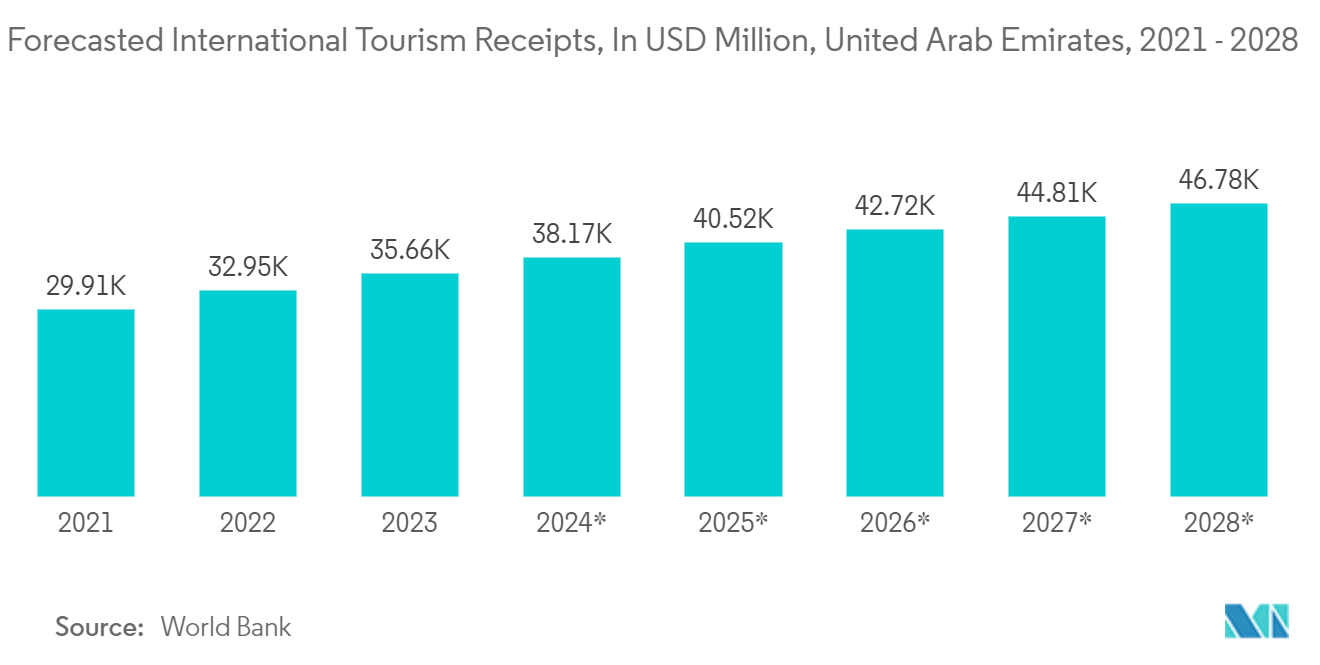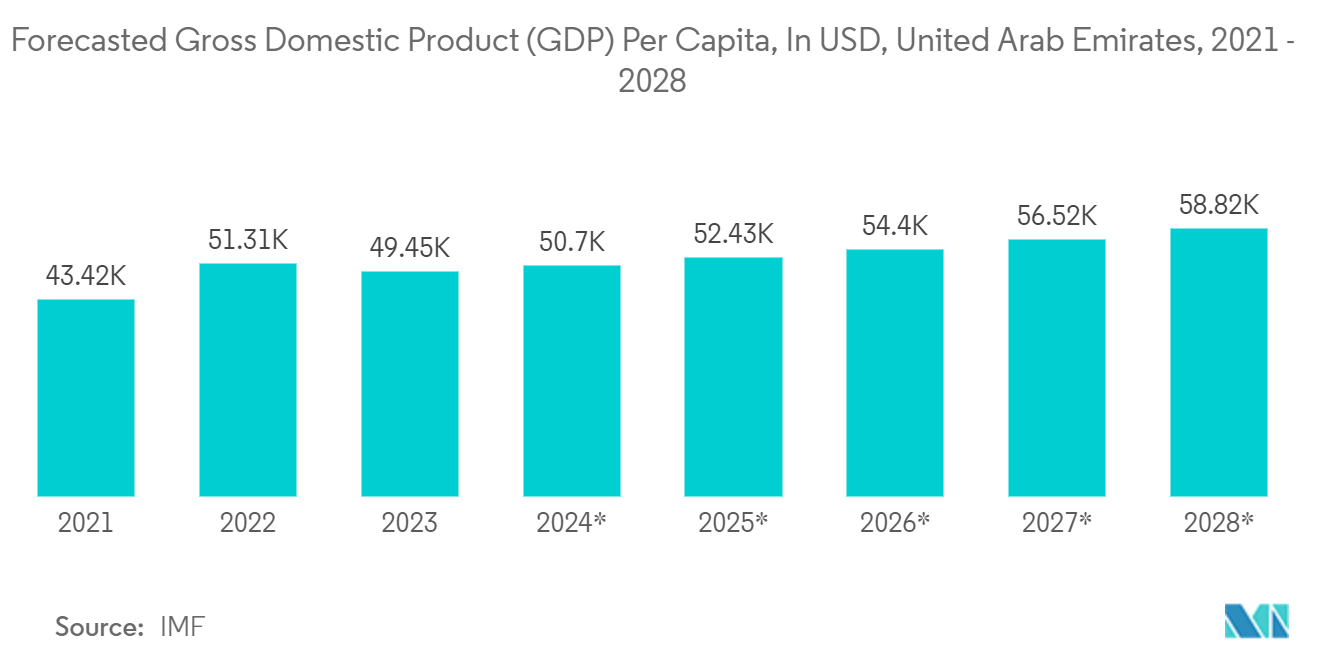Market Trends of GCC Disposables (Single-Use) Packaging Industry
Coffee and Snack Outlets to Witness Major Growth
- A strong economy and various communities are projected to support expansion in the GCC cafe and snack outlets in the next years. In the UAE, the food market is booming, especially in the café and bakery sectors. Even when the financial crisis hit in 2008, the cafe sector saw little difficulties as it emerged from the challenging stage.
- A sizable portion of the coffee and snack shop clients are adolescents. In a paper emphasizing the demographic transition in the GCC, Kuwait Financial Centre (Markaz) stated that the area is young, with 54% of residents under the age of 25. However, this is anticipated to climb to 36 years by 2050. Brands are trying to innovate their product range to attract young customers. Such trends are driving the growth of the cafes and bakery industry in GCC.
- In addition, to increase tourist numbers and reduce their reliance on an oil-based economy, the continent is currently seeing massive investments in the hospitality and tourism sectors. Due to increased commercial developments and an influx of visitors from abroad who want to try new local coffee beverages, the market is anticipated to grow substantially in the upcoming years.
- As per the data from the World Bank, between 2024 and 2028, the United Arab Emirates' foreign tourism receipts were expected to increase by a cumulative USD 11.1 billion (+31.17%). According to estimates, tourism receipts will hit a new peak in 2028 when they reach USD 46.8 billion, marking the eighth consecutive year of increasing tickets. With the growth of tourist footfall in the region, there would be a recovery in demand for disposable cups for refreshers in Cafes and snacks outlets across the region.
- Coffee obsession and consumption have gone through the roof in the United Arab Emirates. However, tea is the most popular drink in the United Arab Emirates. Such factors drive the market for disposable paper cups in cafeterias across the region.

United Arab Emirates to Register Significant Growth
- The growing popularity of disposable packaging in the United Arab Emirates may boost the market. The reasons behind the shift in attention to disposable packaging products such as trays, boxes, cartons, plates, bottles, and cups are sustainability, hygiene factors, ease of disposal, and growing consumer awareness of on-the-go consumption in the United Arab Emirates.
- Moreover, the standard of living in the United Arab Emirates is one of the highest in the world. A liberal, business-friendly, market-oriented growth strategy has transformed the economy. The non-oil sector expanded steadily as the economy diversified. However, due to its increasing diversification, the UAE has been hit harder by the global financial crisis than its neighbors. Abu Dhabi and Dubai account for about 80% of the UAE's income.
- With the growth of end-user industries, primarily food and other non-food sectors, the demand for disposable packaging products such as boxes and folding cartons is expected to grow over the forecast period. UAE has a much more diverse population who are health conscious and prioritize health-based food products, including food, processed breakfast cereals, wholegrain cereals, and an equal proportion of fruits and vegetables consumed as a salad. According to the managing director of Hotpack Global, the food packaging industry in the UAE is expected to grow to AED 14 billion (USD 3.81 billion) by 2025. More international food brands in the MENA markets have also contributed significantly to the sector's growth.
- In countries like the United Arab Emirates, Qatar, and Saudi Arabia eating in restaurants is now widely recognized as the place to celebrate special occasions and have fun with the family. According to International Monetary Fund (IMF), the United Arab Emirates' gross domestic product is predicted to grow steadily between 2023 and 2028 by USD 9,365 (+18.94%). In 2028, the GDP per person is anticipated to reach USD 58,816.62.
- Furthermore, the United Arab Emirates is witnessing a significant demand for pharmaceutical products. The United Arab Emirates imports pharmaceutical products from 72 countries. IQVIA projected that pharmaceutical sales in the country might reach USD 51 billion by 2024. Moreover, increased awareness about the established benefits of secondary packaging for pharmaceutical products and healthcare facilities drives the market.


